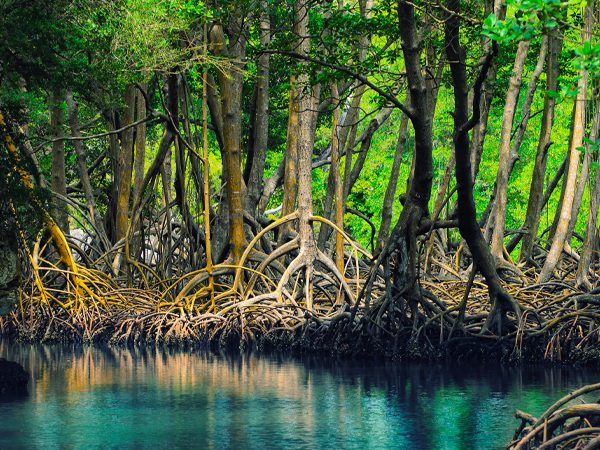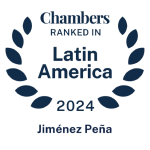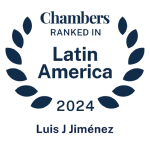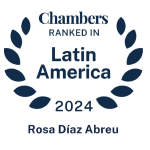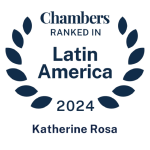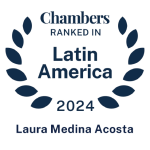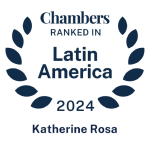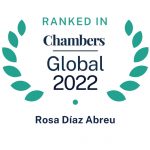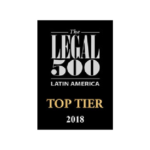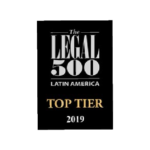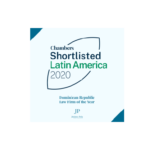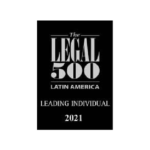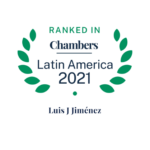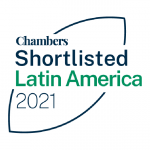The threat of severe weather-related events that many countries will and are enduring due to climate change has motivated them to protect their natural defenses (i.e., ecosystems). Restoring ecosystems carries a huge payoff; for example, mangroves help the world avoid around US$80 billion a year in losses from floods and save additional billions in other ways.[1]
Mangroves are beautiful, unique, and biologically rich ecosystems. They’re also vital to addressing climate change. Increasingly, countries are acknowledging this by incorporating mangroves in their climate change commitments.
Under the Paris Agreement, each party is required to outline and communicate their climate actions, known as their nationally determined contributions (NDCs).[2] The idea behind NDCs is to acknowledge that countries have different resources, abilities, and circumstances. Each party designs its own pledge for meeting the Paris Agreement goals and includes the mitigation and adaptation measures that they will take to face climate change.
Mitigation involves reducing the flow of heat-trapping greenhouse gases into the atmosphere, either by reducing sources of these gases or enhancing the “sinks” that accumulate and store them, such as mangroves.[3] Adaptation involves adjusting to actual or future climate to reduce vulnerability of harmful effects of climate change, like sea level rise.[4] NDCs incorporate efforts by each country to reduce national emissions (i.e., mitigation) and adapt to the impacts of climate change.[5]
Many NDCs have included “nature-based solutions” (NBS) to tackle the climate crisis; NBS are “actions to protect, sustainably manage, and restore natural or modified ecosystems, that address societal challenges effectively and adaptively, simultaneously providing human well-being and biodiversity benefits.”[6] The mangrove ecosystem is a prime example of a NBS[7] because it stores up to five times as much organic carbon as tropical upland forests[8] and protect coasts from erosion and severe climate events.
Consequently, more and more countries have considered conserving and restoring mangroves as part of their NDCs. As of October 2021, 71 countries included coastal and marine NBS in their new or updated NDCs.[9] NDCs submitted so far this year have continued the trend.
Since November 2021, 16 countries have submitted new and updated versions of their NDCs and 10 of them have mangrove forests in their jurisdictions (i.e., Argentina, New Zealand, Comoro, Venezuela, Brazil, Guatemala, El Salvador, Mozambique, Republic of Korea, and Cote d’Ivoire). All but Brazil, New Zealand, and Ghana addressed mangroves in their updated NDCs directly or indirectly. Below are some examples of recently submitted new or updated NDCs which use mangrove as a NBS for mitigation and adaptation measures:
- Argentina’s second NDC includes as a mitigation plan the enhancement of policies to protect carbon-rich ecosystems such as forests, wetlands, and natural grasslands.[10]
- Comoro’s updated NDC included in its “adaptation actions” the need to monitor and restore marine and coastal ecosystem and to extend its protected areas.[11]
- Venezuela’s updated NDC submission proposes to restore mangroves to conserve biological diversity and to adapt for climate change events and mitigate its effects.[12]
- Guatemala’s updated NDC included several goals focused on conserving and restoring the mangrove ecosystem. For example, “by 2025, at least 1,500 hectares of mangrove ecosystems will be restored and reforested, with the full participation of local communities, indigenous and Garífuna peoples, groups of women and youth.”[13] Guatemala’s aim is to increase the adaptive capacity of the marine-coastal areas, contribute to maintaining the habitat and refuge of the biological diversity of fauna, improve food security and tourism, and increase forest carbon stocks and the potential for blue carbon.[14]
- El Salvador’s updated NDC aims to support sustainable agriculture by restoring mangrove ecosystems, among others.[15] It established as a national priority the conservation of forests and the sustainable management of ecosystems of natural protected areas, including mangroves, with special emphasis on building resilience at the landscape level and evaluating the effects of climate on the habitat of species and the structural and functional connectivity of ecosystems.[16]
- Mozambique’s NDC included the regeneration of mangroves as part of a goal to build resilience of fisheries.[17] It set a target to expand restored mangrove areas to 5,000 ha by 2025.[18]
- The updated NDC of the Republic of Korea does not mention mangroves explicitly, but it does include a goal to “maintain and improve its carbon sinks with sustainable forest management, conservation and restoration and increase forestlands by … creating new coastal and inland wetlands as well as vegetation in waterfront areas.”[19]
- Cote d’Ivore’s updated NDC included as one of its 2030 horizon objectives to consider the destructive action of humans on ecosystems such as mangroves, especially in relation to coastal areas where infrastructure is built.[20]
Prior to these submissions, Argentina, Venezuela, Guatemala, El Salvador, and the Republic of Korea had not considered mangroves or NBS in their NDCs. Hence, the inclusion of mangroves and coastal ecosystems in these NDCs demonstrates a growing global recognition of the importance of mangrove forests to combatting climate change, both as an important source of carbon capture and as protection against severe climate-related weather events. It will be important for countries to keep considering them while updating their NDCs and to really commit their resources to protect them.
Planting mangroves –or restoring their ecosystem– is much cheaper than building breakwaters, and the trees also improve the water quality, reduce storm surges, prevent coastal flooding, and protect fish habitats.[21] Therefore, the population of coastal countries must lobby for mangrove protection and aim to include them in their NDCs. I believe that there is still hope in the fight against climate change, but such responsibility must not remain solely in the hands of politicians; communities must engage in the enforcement of their NDCs by making sure NBS are at the core of these commitments.
[1] BILL GATES, How to Avoid a Climate Disaster: The Solutions We Have and the Breakthroughs We Need, (Alfred A. Knopf, 2021) at 172-173.
[2] UNFCCC, Nationally Determined Contributions (NDCs). Available at https://unfccc.int/process-and-meetings/the-paris-agreement/nationally-determined-contributions-ndcs/nationally-determined-contributions-ndcs. Last accessed 13 May 2022.
[3] Global Climate Change, Responding to Climate Change, NASA. Last accessed https://climate.nasa.gov/solutions/adaptation-mitigation/. Last accessed 13 May 2022.
[4] Ibid.
[5] WORLD WILDLIFE FUND, NDCs – A Force of Nature? (4th Ed., November 2021) at 8. Available at https://wwfint.awsassets.panda.org/downloads/wwf_ndcs_for_nature_4th_edition.pdf. Last accessed 13 May 2022.
[6] IUCN, Nature-based solutions. Available at https://www.iucn.org/commissions/commission-ecosystem-management/our-work/nature-based-solutions. Last accessed 13 May 2022.
[7] EMMA BARNES, Mangroves as a Solution to the Climate Crisis, World Wildlife Fund (4 January 2022). Available at https://www.worldwildlife.org/stories/mangroves-as-a-solution-to-the-climate-crisis. Last accessed 25 April 2022.
[8] MARK CHATTING ET AL., Future Mangrove Carbon Storage Under Climate Change and Deforestation, Frontiers in Marine Science (10 February 2022). Available at https://www.frontiersin.org/articles/10.3389/fmars.2022.781876/full#B19. Last accessed 10 May 20222.
[9] GLOBAL MANGROVE ALLIANCE, Are mangroves being included in Nationally Determined Contributions to the Paris Agreement? Available at https://www.mangrovealliance.org/news/mangroves-in-paris-agreement-commitments/. Last accessed 10 May 2022.
[10] WORLD WILDLIFE FUND, NDCs – A Force of Nature? Op. Cit., at 25.
[11] Union of the Comoros, Contribution Determinee Au Niveau National (CDN actualisée), UNFCCC (5 November 2021), at 9. Available at https://www4.unfccc.int/sites/ndcstaging/PublishedDocuments/Comoros%20First/INDC_Comores_Version_Francaise.pdf. Last accessed 10 May 2022.
[12] Republic of Venezuela, Actualización de la Contribución Nacionalmente Determinada de la República Bolivariana de Venezuela para la lucha contra el Cambio Climático y sus efectos, UNFCCC (9 November 2021), at 151. Available at https://www4.unfccc.int/sites/ndcstaging/PublishedDocuments/Venezuela%20(Bolivarian%20Republic%20of)%20First/Actualizacion%20NDC%20Venezuela.pdf. Last accessed 10 May 2022.
[13] Government of Guatemala – Ministry of Environment and Natural Resources, Contribución Nacionalmente Determinada Guatemala 2021, UNFCCC (4 January 2022), at 44. Available at https://www4.unfccc.int/sites/ndcstaging/PublishedDocuments/Guatemala%20First/Contribuci%C3%B3n%20Nacionalmente%20Determinada%20Guatemala.pdf. Last accessed 1 May 2022.
[14] Id., at 44-45.
[15] Government of El Salvador– Ministry of Environment and Natural Resources, Contribuciones Nacionalmente Determinadas El Salvador 2021, UNFCCC (4 January 2022), at 69. Available at https://www4.unfccc.int/sites/ndcstaging/PublishedDocuments/El%20Salvador%20First/El%20Salvador%20NDC-%20Updated%20Dic.2021.pdf. Last accessed 1 May 2022.
[16] Id., at 72.
[17] Republic of Mozambique – Ministry of Land and Environment, Update of the First Nationally Determined Contribution to the United Nations Framework Convention on Climate Change (period 2020-2025), UNFCCC (27 December 2021), at 40, 41. Available at https://www4.unfccc.int/sites/ndcstaging/PublishedDocuments/Mozambique%20First/NDC_EN_Final.pdf. Last accessed 1 May 2022.
[18] Id., at 66-67.
[19] Republic of Korea, Submission under the Paris Agreement of the Republic of Korea’s Enhanced Update of its First Nationally Determined Contribution, UNFCCC (23 December 2021), at 3. Available at https://www4.unfccc.int/sites/ndcstaging/PublishedDocuments/Republic%20of%20Korea%20First/211223_The%20Republic%20of%20Korea’s%20Enhanced%20Update%20of%20its%20First%20Nationally%20Determined%20Contribution_211227_editorial%20change.pdf. Last accessed 1 May 2022.
[20] Cote d’Ivoire, Contributions Prevues Determinees au niveau national de la Cote d’Ivoire, UNFCCC (9 May 2022), at 21. Available at https://www4.unfccc.int/sites/ndcstaging/PublishedDocuments/C%C3%B4te%20d’Ivoire%20Second/CDN_CIV_2022.pdf. Last accessed 10 May 2022.
[21] BILL GATES, How to Avoid a Climate Disaster: The Solutions We Have and the Breakthroughs We Need, Op. Cit., at 172-173.

